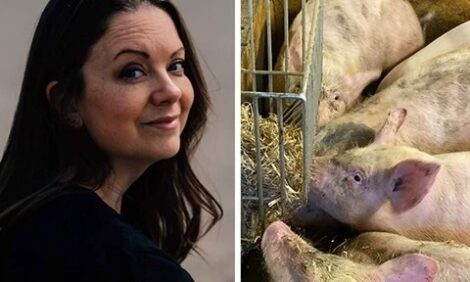



Q&A with dol-sensors' Claus Møller Pødenphant: Smarter barn monitoring for healthier, more efficient pig production
dol-sensors' Monitoring Solutions offer producers more control, more efficiency and better animal welfare — all based on reliable, real-time data
Editor's note: I recently had the pleasure of speaking with dol-sensor's area sales manager Claus Møller Pødenphant about the challenges pig producers face when monitoring barn conditions and how their Monitoring Solutions can provide accurate, real-time data and peace of mind.
What are some of the biggest challenges pig producers face when it comes to monitoring barn conditions?
Climate and water management are critical, but many producers still rely on spot checks or local controls. If CO₂ levels rise, ammonia spikes, or water leaks occur between checks, problems may go unnoticed. These issues can quickly escalate, harming animal welfare, reducing growth rates, and increasing mortality.
Why is it risky to rely on manual monitoring or “gut feeling”?
Without accurate, real-time data, farmers may miss early warning signs of climate stress or abnormal water consumption. This leads to delayed responses, higher costs, and avoidable production losses. Decisions based only on experience can be inconsistent, especially when regulations on emissions and welfare are becoming stricter.
How does dol-sensors’ Monitoring Solutions address these problems?
Our solution can bring all farm climate data together in one online dashboard — no matter how many sites you have or where they’re located. Using LoRa-based sensors, data on temperature, humidity, CO₂, ammonia and water consumption is collected wirelessly and sent securely to the farm’s server every hour. Producers can view everything in real time, without needing internet inside the barn.
What specific problems can farmers detect earlier with this system?
With continuous monitoring, producers can quickly identify CO₂ buildup, sudden temperature swings, water leaks, or high ammonia levels. Alarms can be set to trigger when thresholds are exceeded, allowing immediate action. This reduces animal stress, lowers mortality and prevents costly production losses.
How can producers use this data for long-term improvements?
The system allows easy benchmarking between barns and farms. Producers can compare feeding strategies, ventilation settings, and equipment performance to identify best practices. Historical data can also be stored for documentation and audits, which helps with regulatory compliance and certification.
What makes this solution practical for everyday farming?
Installation is simple — no technician is required, and internet inside the barn isn’t needed. The sensors are designed to withstand the harsh barn environment, ensuring reliability and low maintenance. The system works with any existing ventilation setup, and it scales easily as farms grow or expand into new regions.
How easy is it to install and run the system?
It’s designed to be as simple as possible. No technician is needed — just plug it in. There’s no internet required in the barn, and the sensors are built to withstand harsh livestock environments. The solution works with existing ventilation systems and scales easily if a producer expands to more farms or regions. The solution is currently available for European farms, with development ongoing for other regions.
What’s the ultimate value of dol-sensor's Monitoring Solutions for pig producers?
Producers gain peace of mind knowing their barns are being monitored 24/7. They save time by not having to visit each site, reduce risks through early problem detection, and make better decisions based on data rather than gut feeling. Ultimately, it’s about creating healthier animals, more efficient production and future-proofing farms against stricter regulations.
What’s next for Monitoring Solutions — how will the system develop in the future?
We see Monitoring Solutions as the foundation of a complete data-driven production system. The next steps include:
- A standalone pig weighing camera with a display directly in the barn, so producers can check average weights at a glance.
- The ability to weigh heavier pigs, expanding the range beyond the current limits of 110 kg.
- A dedicated solution tailored for the US market, ensuring compatibility with local farm setups and regulations.
Our goal is to keep adding tools that give producers more control, more efficiency and better animal welfare — all based on reliable, real-time data.








